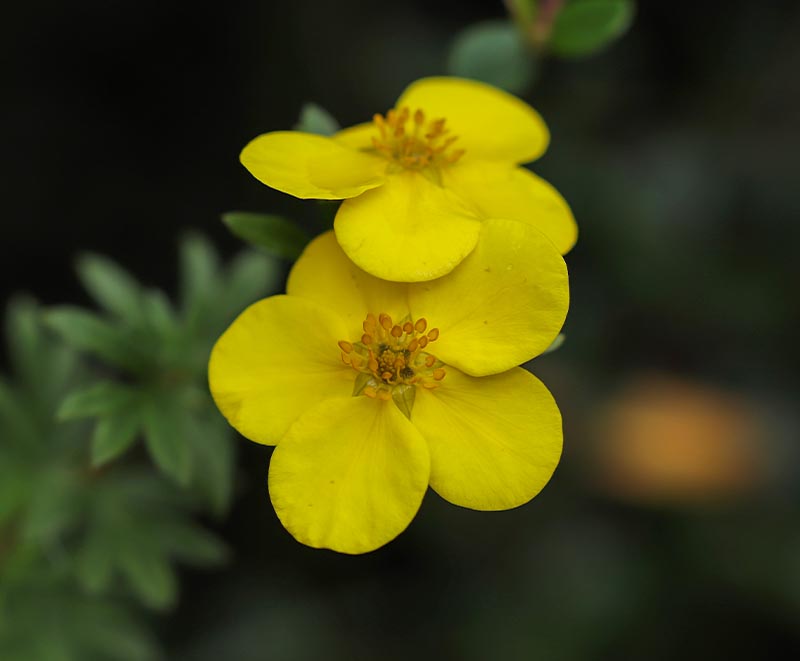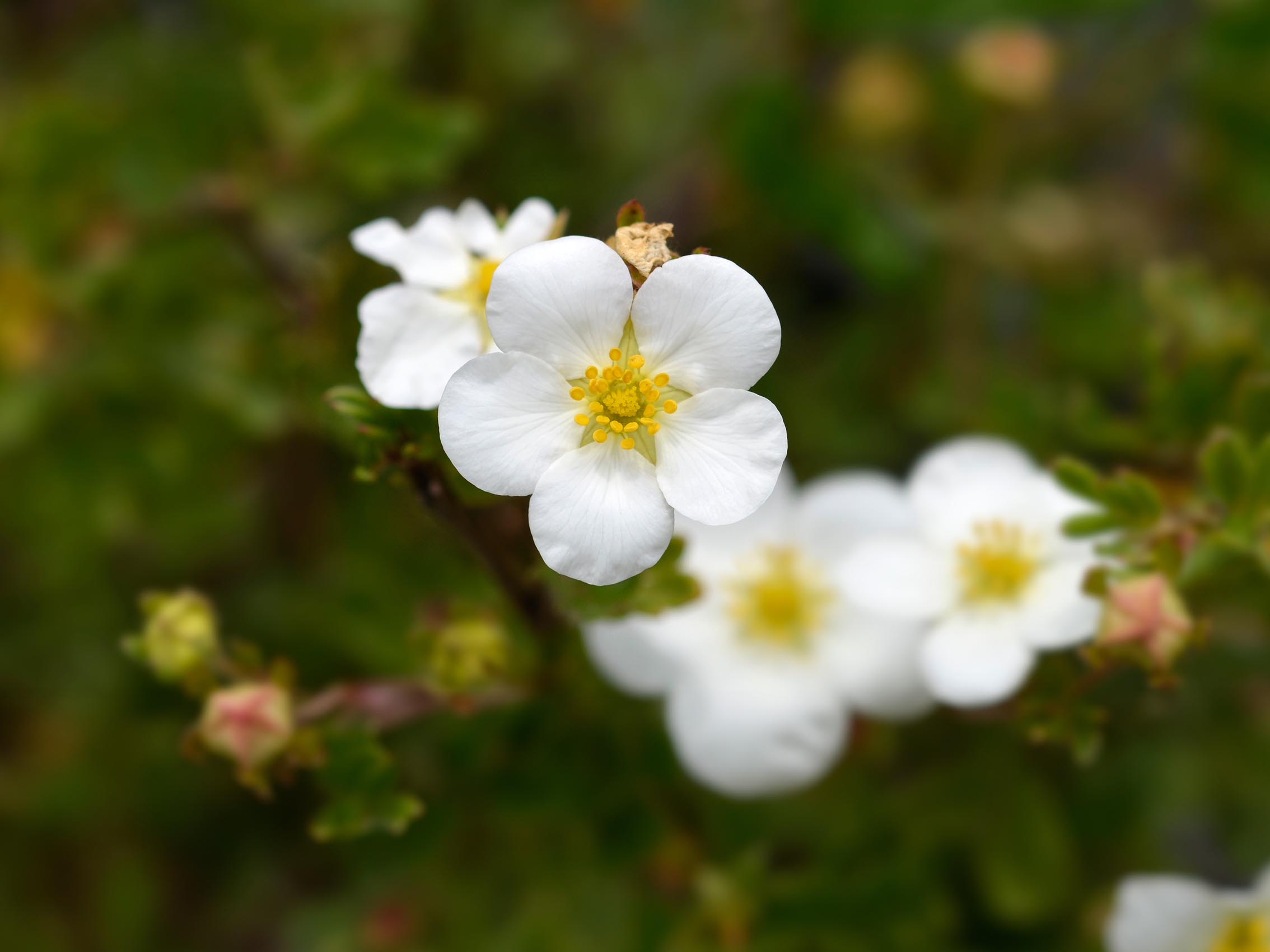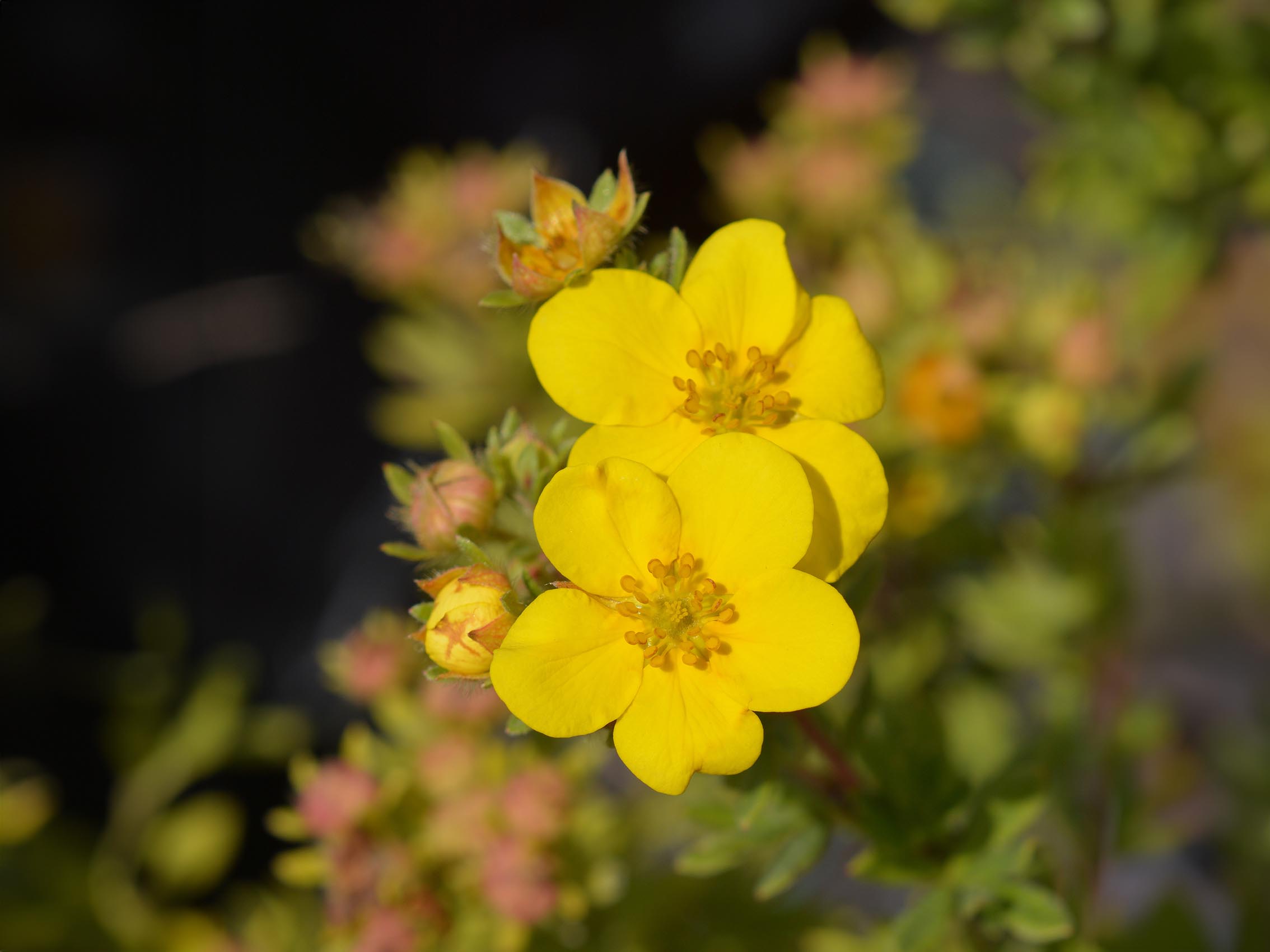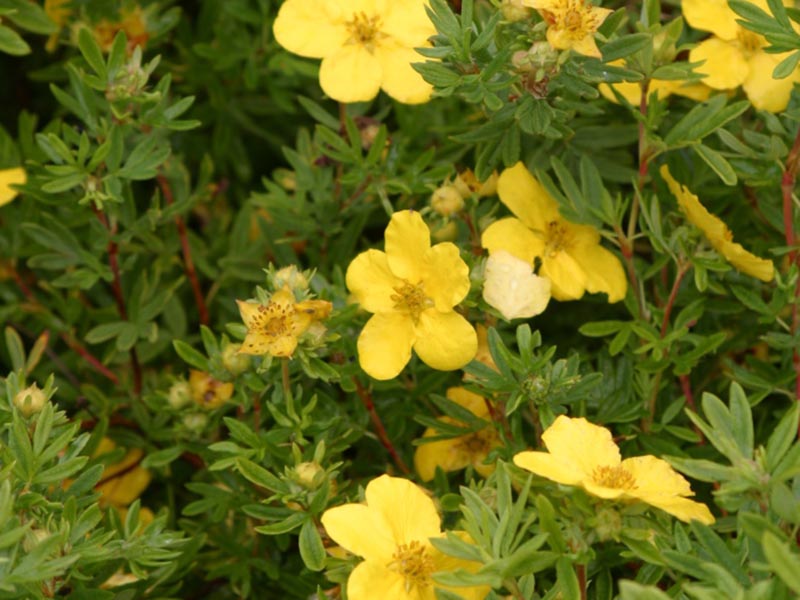Plant Focus: Potentilla fruticosa
A pretty, low maintenance species for soft landscaping
Native to the Northern Hemisphere, Potentilla is a genus of around 500 plant species within the Rosaceae family. They can be either shrubs or perennials, but here we are focussing on Potentilla fruticosa—a species of shrubs which are commonly known as shrubby cinquefoil. Potentilla fruticosa is a hardy, deciduous shrub and depending on the variety, tends to reach a height of between 70cm to 1.2m.
Prized for its long-lasting, beautiful flowers, Potentilla fruticosa boasts saucer-shaped, single or semi-double flowers in a wide variety of colours, including pink, yellow, orange, and white. Its long flowering season runs from spring to autumn, with a particularly exceptional display in summer. Potentilla fruticosa often has silver, hairy foliage, which it loses around November, with new growth in April and May.
Key Characteristics of Potentilla fruticosa:
✓ Deciduous shrub
✓ Height varies from 70cm to 1.2m
✓ Long flowering season from spring to autumn
✓ Useful as an informal hedge, for groundcover, or in flower borders and beds
✓ Thrives in many conditions
✓ Prefers full sun or partial shade
✓ Low maintenance
✓ Excellent source of pollen and nectar

Potentilla fruticosa ‘Goldfinger’
Fun Fact
Its common name of shrubby cinquefoil means “five leaves”. This is referring to the five leaflets that many Potentilla varieties feature.
A highly versatile, low maintenance planting option, Potentilla fruticosa can be grown as an informal hedge, used as groundcover on slopes, or planted within flower borders and beds. It works particularly well as part of a rock or cottage garden planting theme, and it also tolerates drought, urban pollution, and salt-laden air. Potentilla fruticosa is great for supporting biodiversity, as its pollen and nectar-rich flowers attract pollinators, such as butterflies and bees.
Our favourite Potentilla fruticosa varieties
Potentilla fruticosa ‘Abbotswood’
Potentilla fruticosa ‘Abbotswood’ is a deciduous shrub that grows up to around 1m in height, with small, pinnate, dark green foliage. Its white flowers put on a stunning display from May to October. Excellent as a specimen shrub, informal hedge, or within a sunny border, Potentilla fruticosa ‘Abbotswood’ is an incredibly versatile planting option.

Potentilla fruticosa ‘Elizabeth’
Potentilla fruticosa ‘Elizabeth’ is a compact, deciduous shrub growing up to around 90cm. It has grey-green leaves with masses of yellow, nectar-rich flowers from May to November, providing colour across multiple seasons. Potentilla fruticosa ‘Elizabeth’ prefers full sun or partial shade, and works well as an informal hedge or planted within a sunny herbaceous border.

Potentilla fruticosa ‘Goldfinger’
A bushy and upright variety that grows up to 1.2m in height. It has small, dark green foliage and an abundance of bright yellow flowers from June to October, providing an excellent source of nectar and pollen. A great, low maintenance planting option for sunny borders and informal hedging.

Potentilla fruticosa ‘Primrose Beauty’
A compact, mound-forming shrub that grows up to 1m in height, with grey-green foliage and primrose-yellow flowers with golden yellow centres from May to October. Potentilla fruticosa ‘Primrose Beauty’ thrives in well-drained soil and full sun, and is a lovely addition to a low maintenance border.

Potentilla fruticosa ‘Red Ace’
A smaller variety, Potentilla fruticosa ‘Red Ace’ is a bushy shrub that grows up to around 70cm in height. It has masses of bright red flowers with yellow centres and undersides, and its petals tend to fade to orange in sunny positions. Its preference for well-drained soil makes it a great choice for rockeries and gravel gardens.

How to grow Potentilla fruticosa
The most ideal times of the year to plant Potentilla fruticosa are during the cooler months, throughout spring or autumn, although spring is preferable, as it gives the roots the longest period of time for a successful establishment. Potentilla fruticosa isn’t particularly fussy about soil types and can thrive in the majority of soil conditions; it can tolerate alkaline or clay soils.
Potentilla fruticosa prefers sunny or partially shaded, well-drained spots. Varieties with vibrant coloured blooms can fade in direct sunlight, so these prefer partial shade during the hottest hours of the day.
How to care for Potentilla fruticosa
Potentilla fruticosa is generally a low maintenance planting option. Simply trimming once a year can help to keep it neat and tidy; it’s best to do this early in spring before any flower buds appear, as removing these can lead to reduced flowering. If required, Potentilla fruticosa can tolerate hard pruning.
Whilst it’s establishing, it’s important to maintain a regular watering routine to encourage healthy roots. However, once Potentilla fruticosa is established, it can cope well with drought. To help retain moisture, mulch with biodegradable or organic materials, such as wood chips or leaves. Ensure to leave a mulch-free circle surrounding the base of the plant to prevent rotting.
If your Potentilla fruticosa does not receive enough sunlight, their show of flowers can be drastically diminished; if this happens, you should carry out hard pruning to roughly a third of the size, to help them to recover and flourish. When it comes to plant feed, Potentilla fruticosa requires minimal feeding; it can be fed with an all-purpose fertiliser once a year in spring, but does not require this once fully established.
Which pests and diseases can Potentilla fruticosa be affected by?
Potentilla fruticosa do not usually suffer from pests and diseases. However, if it hasn’t been provided with ideal conditions and there is too much shade or high humidity, Potentilla fruticosa can suffer from diseases such as powdery mildew, downy mildew, or leaf spot. In addition to this, over watering or insufficient drainage can lead to root rot.
Powdery mildew is a fungal disease that causes dusty, white, cobweb-like patches above leaves and flowers. It weakens the plant and has the ability to spread rapidly. Biological fungicides are the best method for treatment. Downy mildew is also caused by a fungus; it disfigures the plant’s aesthetic appearance by causing withering and discolouration, potentially leading to rotting and death. If it’s spotted early, leaves can be removed. Unfortunately, if it has totally taken hold, the whole plant must be carefully disposed of. Leaf spot can be caused by many fungal or bacterial diseases, and usually presents with brown or black patches with a darker margin on the plant’s leaves. These patches grow in size until the whole leaf dies and falls off, resulting in stunted growth and impaired aesthetic performance. Leaf spot can be treated with an organic solution that contains sulphur or copper octanoate.
With its long flowering season, as well as being low maintenance, it’s clear to see why Potentilla fruticosa is such a popular choice for gardens. If you’d like to find out more about the Potentilla fruticosa varieties which we grow and supply, get in touch with the G Team today.

